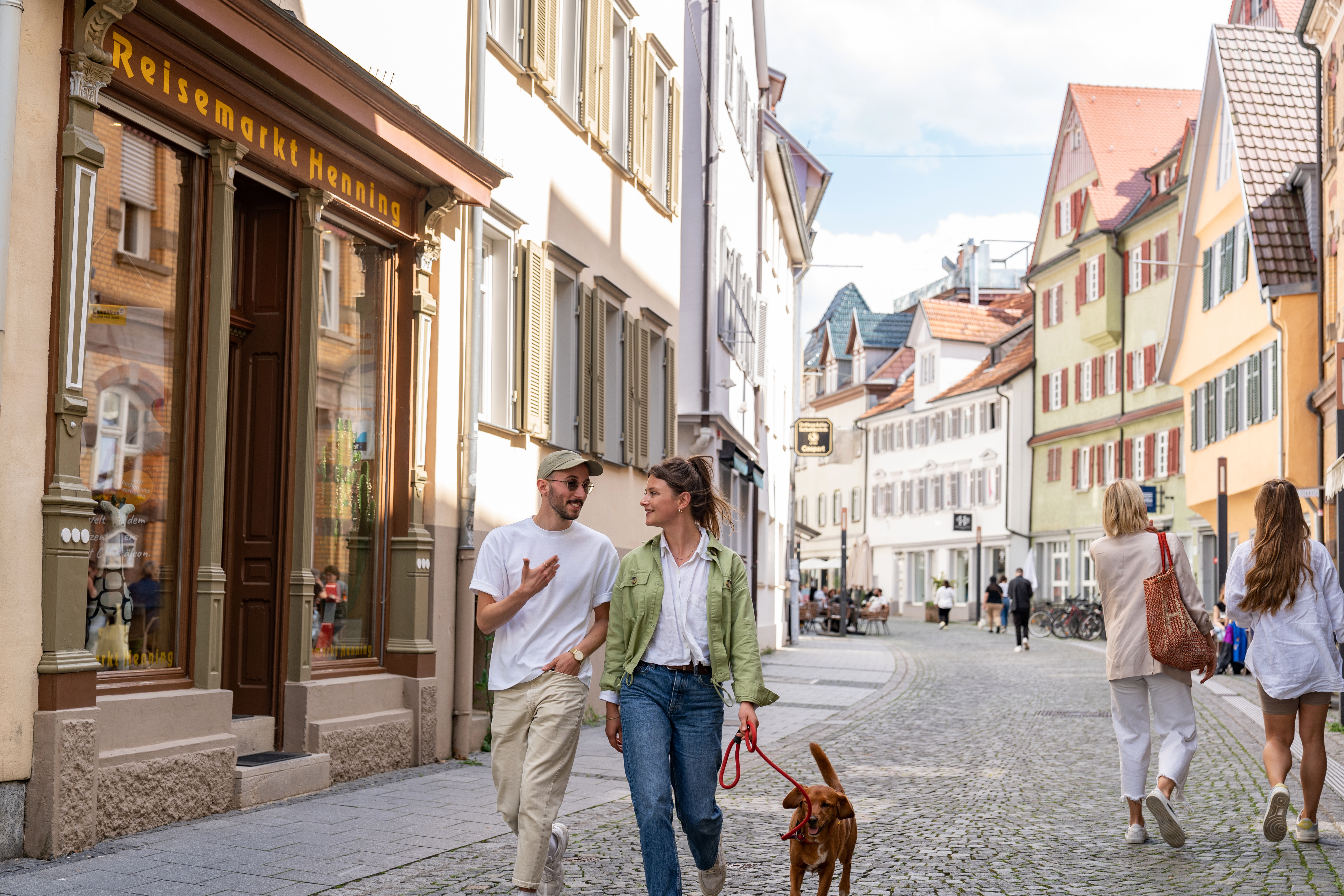Discover the Region: on the move in Esslingen, Ludwigsburg, Marbach and Schorndorf
The region surrounding Stuttgart has a lot to offer. Just north of Stuttgart lies Ludwigsburg, a Baroque city and former royal residence of the dukes and kings of Württemberg. Not far from Ludwigsburg there's Marbach, the birthplace of Friedrich Schiller. To the east of Stuttgart, on the banks of the R. Neckar, you'll find Esslingen, a medieval town steeped in history. Also to the east, in the borough of Rems-Murr, lies Schorndorf – the town where Gottlieb Daimler first saw the light of day.
Ludwigsburg
With its broad, straight streets, two-storeyed, pastel-coloured town houses, the arcaded buildings bordering the marketplace, and of course the former royal palace, Ludwigsburg is truly a Baroque synthesis of the arts. 1704 saw the laying of the foundation stone of Ludwigsburg Palace. With 452 rooms, 18 buildings and three courtyards, this is today Germany's biggest surviving Baroque palace complex. The palace stands in a park of some 30 hectares with its "Baroque in Bloom" gardens, which display magnificent garden art from many different eras. Since the year 1959 the adjoining "Fairy-tale Garden" has transported visitors to the fantasy world of fairy tales and legends. Where does the Frog Prince live? What does the Sleeping Beauty look like? What pranks are Max und Moritz planning? Children aged nine to ninety will be enthralled.
In addition to the so-called "Swabian Versailles", Ludwigsburg boasts two more palaces. Within sight of the former royal residence lies the palace of Favorite with its Baroque façade and Empire interior. No less worth seeing than its ornamental frescos is its nature and wild-life park, which covers an area of more than 72 hectares. Ludwigsburg's lakeside palace of Monrepos is a Rococo masterpiece with an Empire interior. Under Duke Friedrich II it was converted and furnished in the style of Classicism. Concerts are held here in the summer months - such as the big open-air concert with a Baroque firework display which is part of the Ludwigsburg Palace Festival.
Esslingen
There are few cities in Germany where history is as tangible as in Esslingen. The town has evolved over a period of well over a thousand years, and this is reflected in the old city centre with its three town halls, the oldest row of timbered buildings in Germany and its splendid patrician houses. One of the old town's showpieces is the astronomical clock at the Old Town Hall (Altes Rathaus). Under its glockenspiel clock, whose carillon can be heard several times a day, the imperial eagle marks the hours by beating its wings. The original clock mechanism dating from 1589 is one of the oldest in Germany and still operates the hands of the clock and the moving figures. For more than 700 years now, Esslingen Castle has towered over this magnificent historical town. It was formerly part of the defensive wall enclosing the city; now it's still possible to explore its towers, walkways and casemates.
Esslingen is renowned far beyond the region's boundaries for its long tradition of viniculture. Wine growing was probably introduced to the Neckar Valley by monks in the Middle Ages, and the city soon developed into a centre of viniculture and the wine trade. In 1826 this long tradition also brought Georg Christian Kessler to Esslingen, where he became Germany's first champagne producer.
Schorndorf
It all began in a pretty timbered house in Schorndorf. This is where Gottlieb Daimler, a baker's son, was born in the year 1834. Today Daimler's birthplace, which was later acquired and restored by the Daimler-Benz AG, is a museum and conference centre. Here, too, hangs the legendary postcard which Gottlieb Daimler sent to his first wife in 1872. On it he marked with a star the house in Cologne-Deutz where he was living at the time and wrote "From here a star will go out...". This was the first glimpse of the star that was later to become the emblem of the Stuttgart automobile manufacturers. Other items include Daimler's journeyman's piece and the notebook he kept during his trip to Russia. His extensive travels and the limitations of the means of transport available were a stimulus for his revolutionary vision: independent mobility. His ideas, all of them milestones of technology, were realised in cooperation with Wilhelm Maybach in his workshop - a greenhouse in Bad Cannstatt. This workshop in the Taubenheimerstrasse is today the site of the Gottlieb Daimler Memorial. Models of the engines and the tools they used bring to life the work and ideas of these two inventors. Daimler's inventions can also be admired at the Gallery for Technology (Galerie für Technik) in Schorndorf, along with other technological achievements.
Marbach am Neckar
High above the R. Neckar, surrounded by natural orchards and vineyards, lies the Schiller town of Marbach am Neckar. It is one of the oldest territorial cities in Württemberg, and because of the fire which destroyed the town in 1693, it is at the same time one of the few towns to have an almost cohesive complex of buildings dating from the 18th century. Since 1983 the walled old town centre has been a protected monument. Friedrich Schiller, the town's most famous son, was born here at Niklastorstraße 31 on 10th November 1759. After fading into obscurity for many years, the building was identified in 1812 and the veneration of Schiller in Marbach began. The Schiller Memorial stands in Schillerhöhe Park, where the foundation stone was laid to celebrate the 100th anniversary of Schiller's birth. The statue was designed by the sculptor Ernst Friedrich Rau and cast in bronze at the Pelargus foundry. Schiller's literary legacy and historical influence are documented at the National Schiller Museum on Schillerhöhe.
